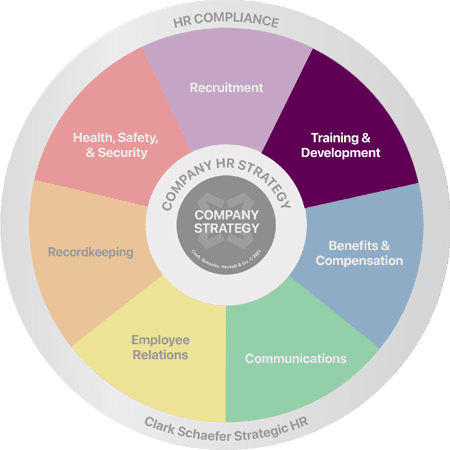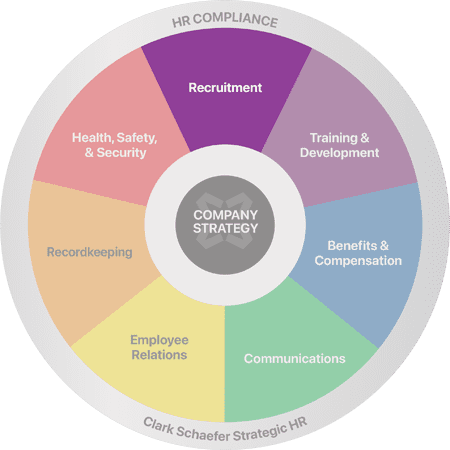How Do I Write and Deliver a Written Warning?
Last Updated on June 26, 2025 / Recordkeeping

HR Question:
I have an employee who is not following company policy. I have given them several verbal warnings, and I know my next step is a written warning. How do I write and deliver a written warning?
HR Answer:
Disciplining employees can be uncomfortable. That’s why most companies have a Progressive Disciplinary Policy, clearly stating the steps employees need to take to modify unacceptable behavior and achieve the expectations of their role within the company. This can take the burden of deciding the next steps or consequences off of the manager and help them maintain an unbiased disciplinary process.
In order for the Progressive Disciplinary Policy to work as designed, it’s important that managers and supervisors document incidents appropriately. By following this policy and documenting incidents accordingly, companies can make a case for discipline or termination. However, without the appropriate documentation, taking disciplinary action can be potentially risky.
How Do Progressive Disciplinary Policies Start?
Most Progressive Disciplinary Policies start with a verbal warning. It’s important to make sure the employee is aware of what policy they are not following, as sometimes it’s simply a case of not being aware. It’s the “human” part of “human resources” – sometimes, employees make honest mistakes when they aren’t aware that they’re not in compliance. A verbal warning here can do the trick. However, sometimes it takes more than a verbal warning. That is when a written warning comes into play.
What’s Next? A Written Warning.
A written warning is a more formal step in the disciplinary process. A written warning should include:
- Employee Name
- Position
- Expectations
- Details of failed expectations
- Consequences of failing to improve
- Employee comment section
- Manager signature/date
- Employee acknowledgment
It’s important to include factual information should the process or the disciplinary action ever be called into question. Additionally, any emotion or opinions should be kept out of the written warning and subsequent documentation.
The Do’s and Don’ts of Writing a Warning
Susan Heathfield, a writer for Balanced Careers, shares the following excellent examples of the right and wrong ways to document an attendance issue in The Importance of Documentation in Human Resources:
Wrong:
“Mark is usually late for work. Mark misses too much work.”
In this example, the documentation lacks specific examples, dates, and times, and includes the supervisor’s opinion, making a poor case against the employee and a strong case for discrimination or targeting by the supervisor.
Right:
“April 1: Mark called in sick and missed eight hours of work.”
“April 4: Mark arrived at work at 10 a.m., two hours late from his scheduled start time.”
“April 6: Mark scheduled a doctor’s appointment and then, stayed home to have a new furnace installed.”
“April 12: Mark called in sick and missed eight hours of work.”
See how the documentation relies on dates, times, and the amount of work missed? It also details the specific reasons the employee was missing work, rather than letting those facts be forgotten or muddled when recalled later.
Best Practices for Written Warnings
Like most processes in business, there are best practices when it comes to delivering written warnings. First, it’s important to be consistent and timely. Avoid waiting days or weeks to write up an employee for an issue, as the impact of the warning (as well as the clarity of each person’s memory) can fade with time. Additionally, if you write up one employee for an attendance issue, be prepared to write up others who have the same issue. This consistency can help prevent claims of discrimination or favoritism.
At the end of the day, it’s important to provide feedback to your team members to help them succeed. If the employee has improved, be sure to acknowledge their effort. If the employee has not improved in the time allowed, continue to follow your Progressive Disciplinary Policy.
Special thanks to Sherri Hume, SHRM-CP and Samantha Kelly for contributing to this HR Question of the Week.
Employment recordkeeping does not rank high on the list of favorite human resources responsibilities, but it can get you into hot water if not done properly. Keeping appropriate disciplinary documentation is vital to proving your processes are compliant. Avoid the fines and minimize your stress level by having Strategic HR assist with your recordkeeping compliance. Visit our HR Compliance and Recordkeeping page to learn more about our services.










